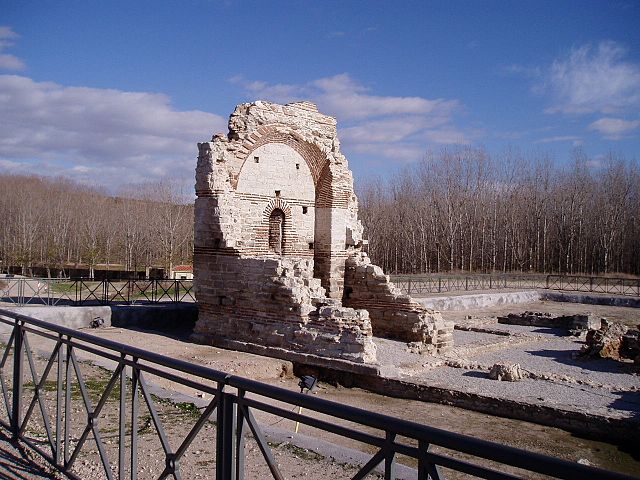Visigothic art and architecture
The Visigoths entered Hispania in 415 and they rose to be the dominant people there until the Umayyad conquest of Hispania of 711 brought their kingdom to an end.
Church of San Juan Bautista in Baños de Cerrato, Spain
Chapel of São Frutuoso in Braga, Portugal
Visigoths remains in the Crypt of San Antolín of the cathedral of Palencia, Spain
Ruins of Basilica of Santa María de Batres in Carranque, Spain
The Visigoths were a Germanic people united under the rule of a king and living within the Roman Empire during late antiquity. The Visigoths first appeared in the Balkans, as a Roman-allied barbarian military group united under the command of Alaric I. Their exact origins are believed to have been diverse but they probably included many descendants of the Thervingi who had moved into the Roman Empire beginning in 376 and had played a major role in defeating the Romans at the Battle of Adrianople in 378. Relations between the Romans and Alaric's Visigoths varied, with the two groups making treaties when convenient, and warring with one another when not. Under Alaric, the Visigoths invaded Italy and sacked Rome in August 410.
The eagles represented on these fibulae from the 6th century, and found in Tierra de Barros (Badajoz), were a popular symbol among the Goths in Spain.
Detail of the votive crown of Recceswinth from the Treasure of Guarrazar (Toledo, Spain), hanging in Madrid. The hanging letters spell [R]ECCESVINTHVS REX OFFERET [King R. offers this].
Gutthiuda[citation needed]
Migrations of the main column of the Visigoths






![Detail of the votive crown of Recceswinth from the Treasure of Guarrazar (Toledo, Spain), hanging in Madrid. The hanging letters spell [R]ECCESVINTHVS](https://upload.wikimedia.org/wikipedia/commons/thumb/f/f2/Corona_de_%2829049230050%29.jpg/287px-Corona_de_%2829049230050%29.jpg)
![Gutthiuda[citation needed]](https://upload.wikimedia.org/wikipedia/commons/thumb/a/a6/Gutthiuda.jpg/640px-Gutthiuda.jpg)
